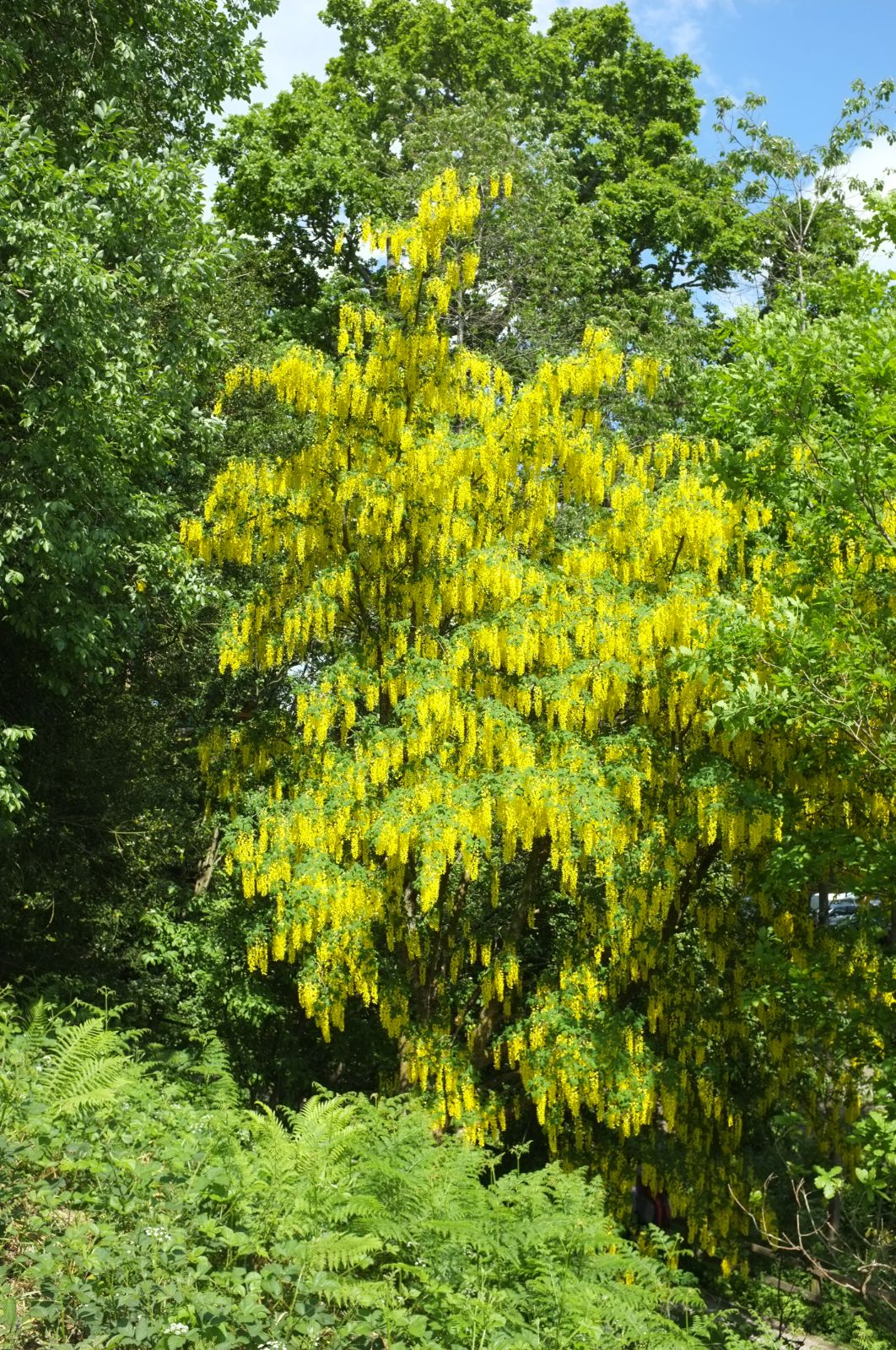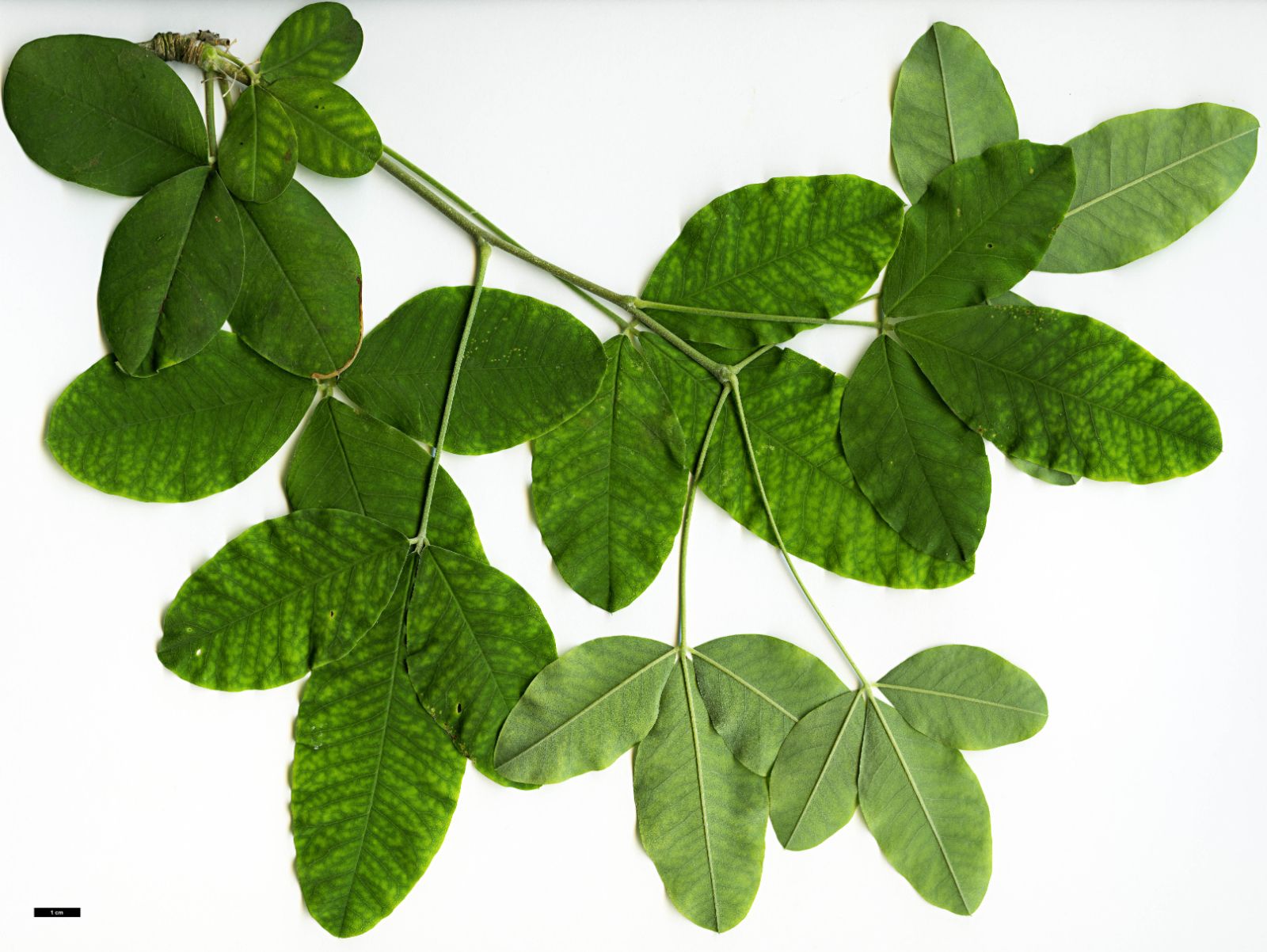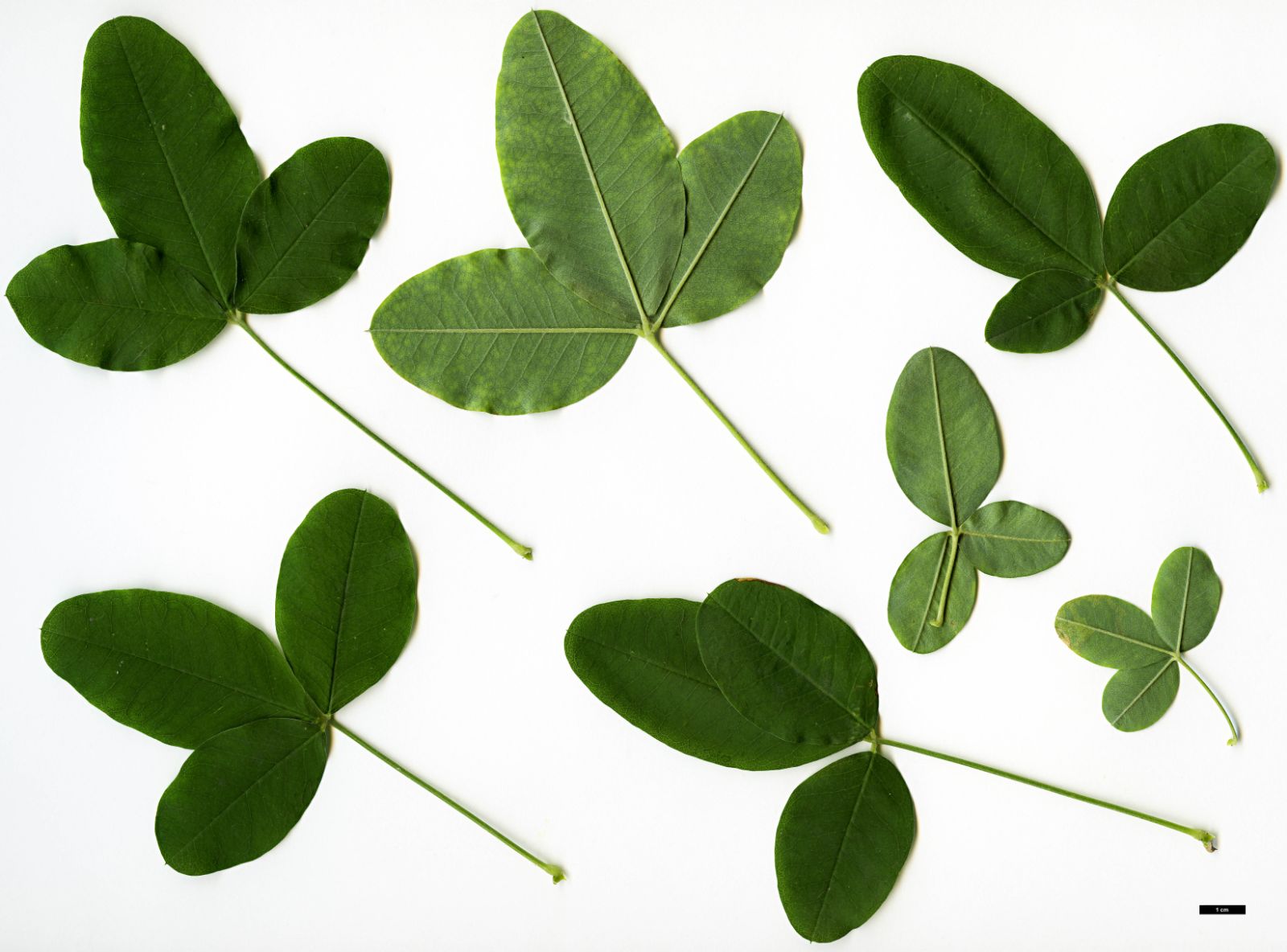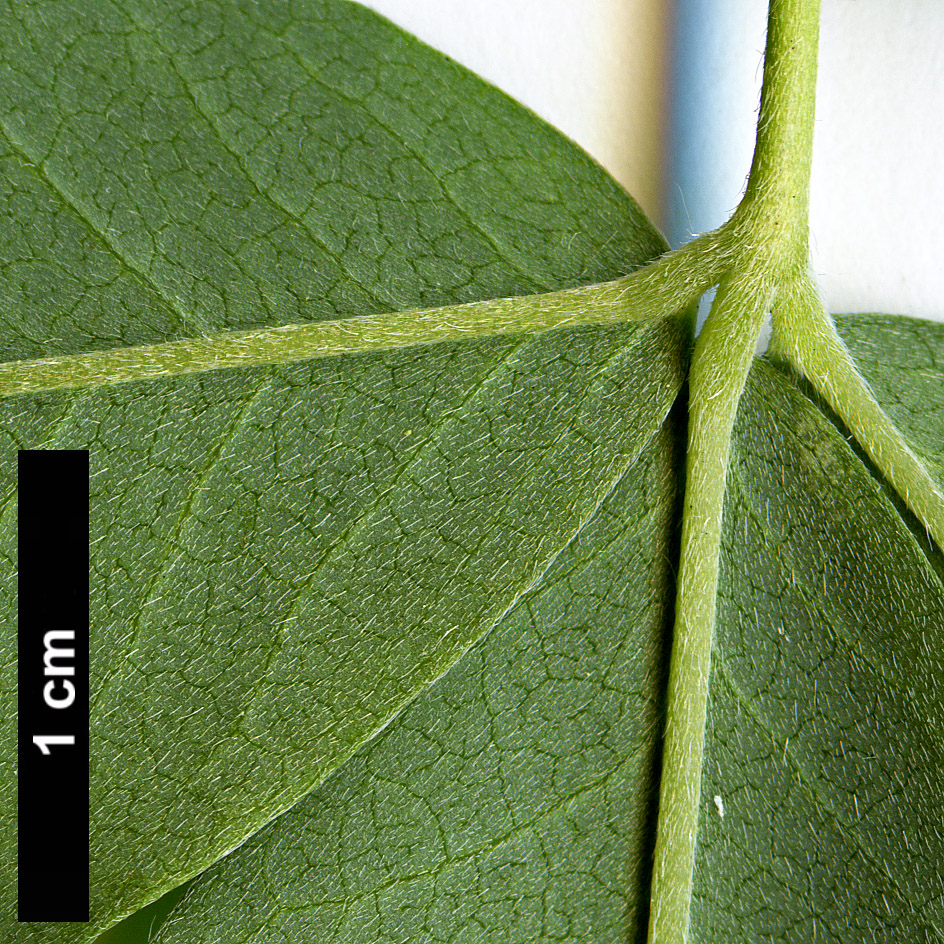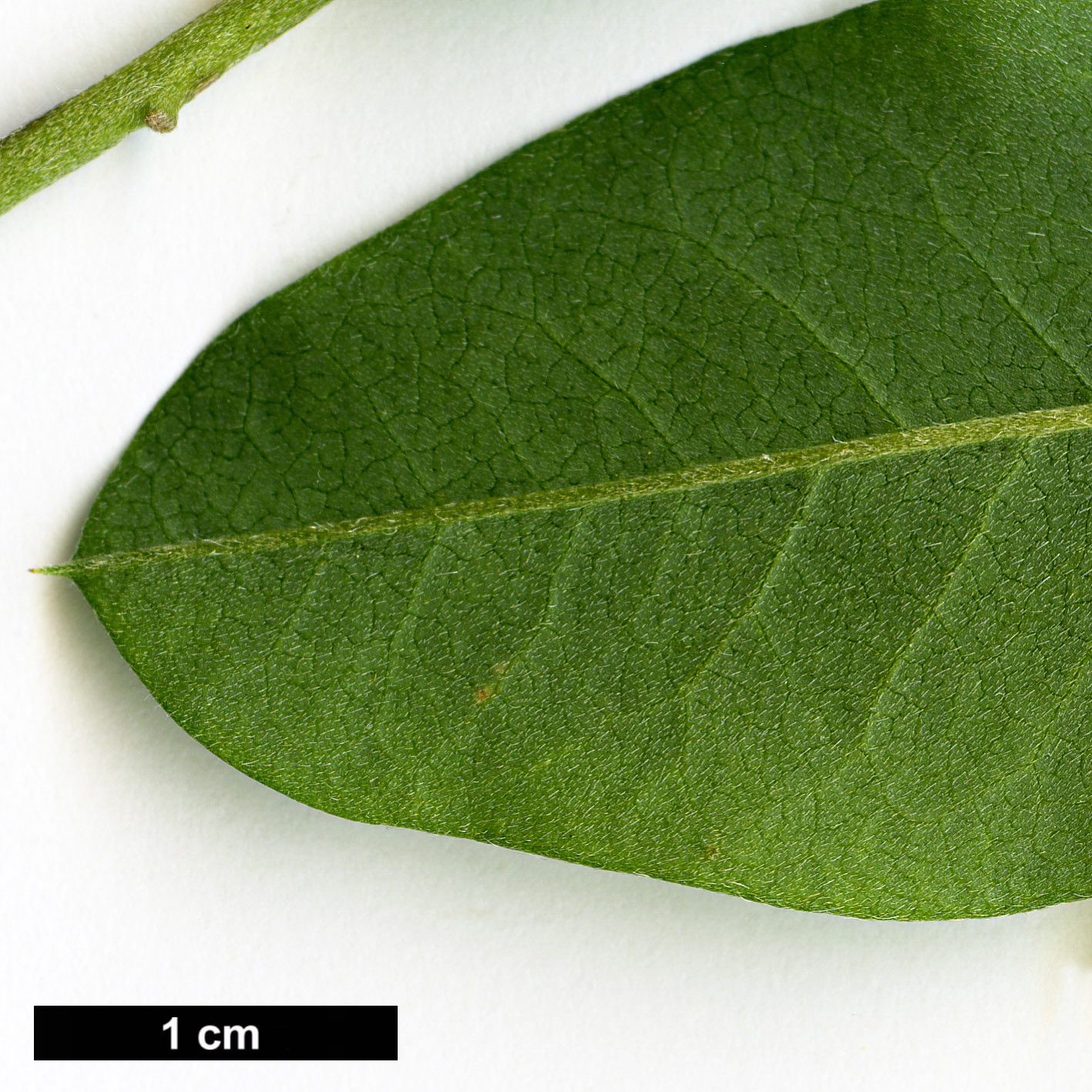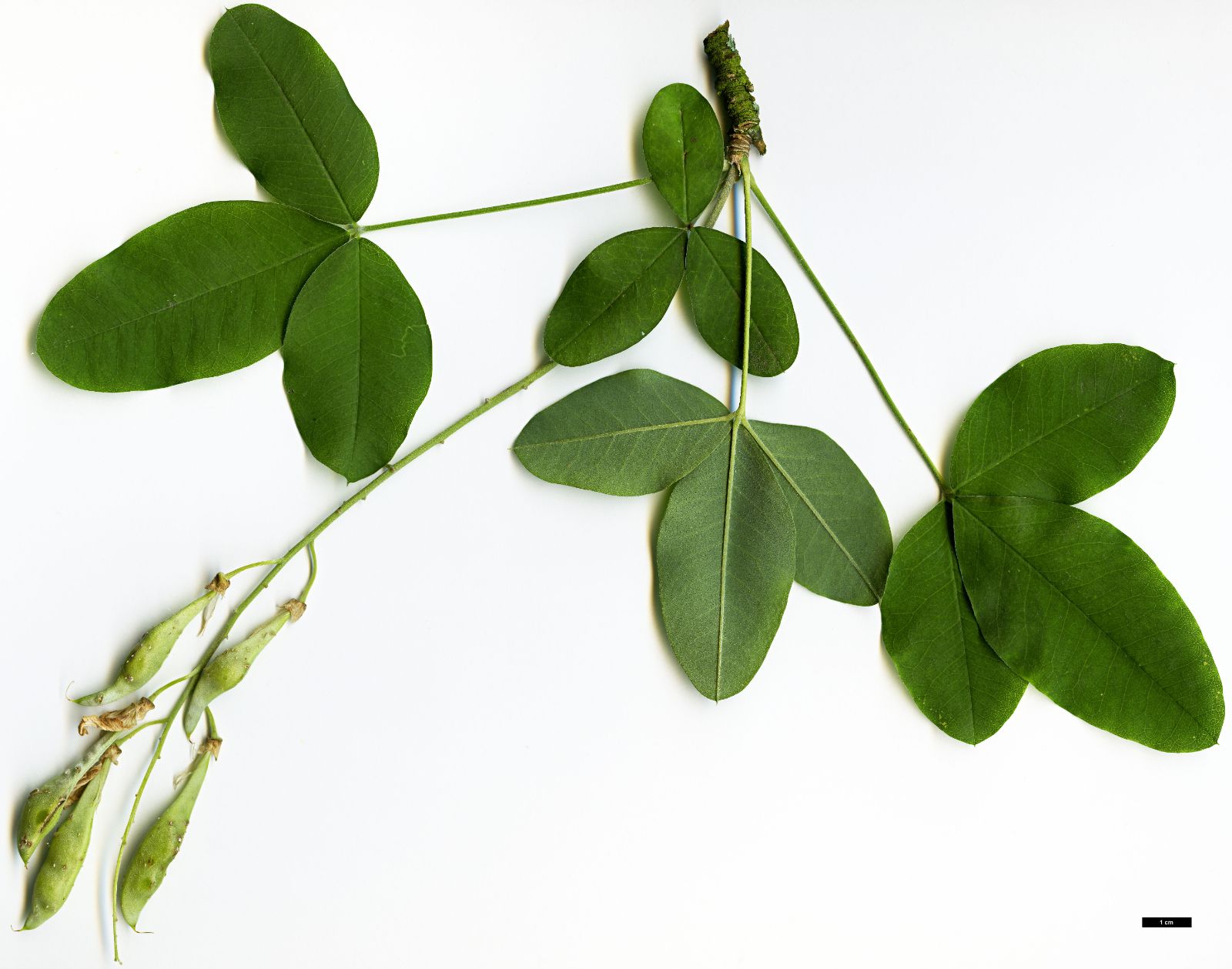A deciduous tree 20 to 30 ft (rarely more) high, often branching close to the ground and forming a wide-spreading, bushy tree. Leaves trifoliolate, with a stalk 2 to 3 in. long; leaflets oval or slightly obovate, 11⁄2 to 3 in. long, downy beneath. Racemes pendulous, cylindrical, 6 to 10 in. long, downy. Flowers golden yellow, 3⁄4 in. long, each borne on a thin, downy stalk 1⁄4 to 1⁄2 in. long. Seed-pods 2 to 3 in. long, the upper seam or suture thickened and keeled, but not winged as in L. alpinum. It blooms from the third week of May into June.
Native of Central and S. Europe, long cultivated in, but not a native of Britain. It was probably one of the earliest ornamental plants introduced to this country, as its great beauty would attract early travellers, and the seed could be easily obtained and transported. No foreign tree is better adapted to our climate. The differences between it and L. alpinum are indicated under that species.
'Aureum'
Leaves golden yellow; one of the prettiest of golden-leaved trees. It affords one of the commonest instances showing the influence of scion on stock, for on grafted trees yellow-leaved shoots frequently appear considerably beneath the point of union. This variety was in commerce in Britain by 1874, but where it was raised cannot be ascertained. It was figured in Fl. d. Serres, Vol. 21 (1875), tt. 2242–3.
'Carlieri'
There seems to be some confusion over the correct use of this name. Kirchner’s original description, from a plant growing in the Muskau Arboretum, states that the variety had very small grey-green leaves and was free-flowering, with long densely flowered racemes. Many of the trees at Muskau were supplied by James Booth and Sons of Hamburg, and there is a specimen in the Kew Herbarium from a tree received from that firm in 1872, which agrees well with Kirchner’s description. The leaflets are remarkably small, {3/8} to 1 in. long, {1/8} to {3/16} in. wide, and the racemes 5 to 10 in. long. Another specimen, obviously of the same variety, was taken from a tree received at Kew from Späth in 1903. But the laburnum described by Schneider as
L. anagyroides var.
carlieri sounds quite different, having very short, almost erect racemes (
Handbuch, Vol. 2, p. 38).
'Involutum'
Leaves curled. A curiosity merely. Listed by James Booth of Hamburg in 1838. A variant described in France in 1847 as
Cytisus laburnum var.
bullatum may be the same (
L. anagyroides f.
bullatum (Jacques) Schneid.).
'Pendulum'
Branchlets slender and weeping; very graceful in habit.
'Quercifolium'
Leaflets curiously lobed after the fashion of an oak leaf, the main leaf-stalk being sometimes winged. The leaf is occasionally five-parted (quinquefoliolate). A very distinct and rather handsome form.
'Sessilifolium'
Leaves crowded, almost stalkless, their bases thus being brought close to the branchlet. A curiosity of no garden value, the branches having a stiff, stunted appearance; not free-flowering.In addition, garden varieties were once in commerce under such epithets as
autumnale,
biferum and
semperflorens; which flower again in autumn or more or less continuously throughout the summer.
var. alschingeri (Vis.) Schneid
A wild variety which differs chiefly from the type in the calyx being distinctly two-lipped, the lower lip the longer; the leaflets are more silky-hairy and grey-blue beneath.

